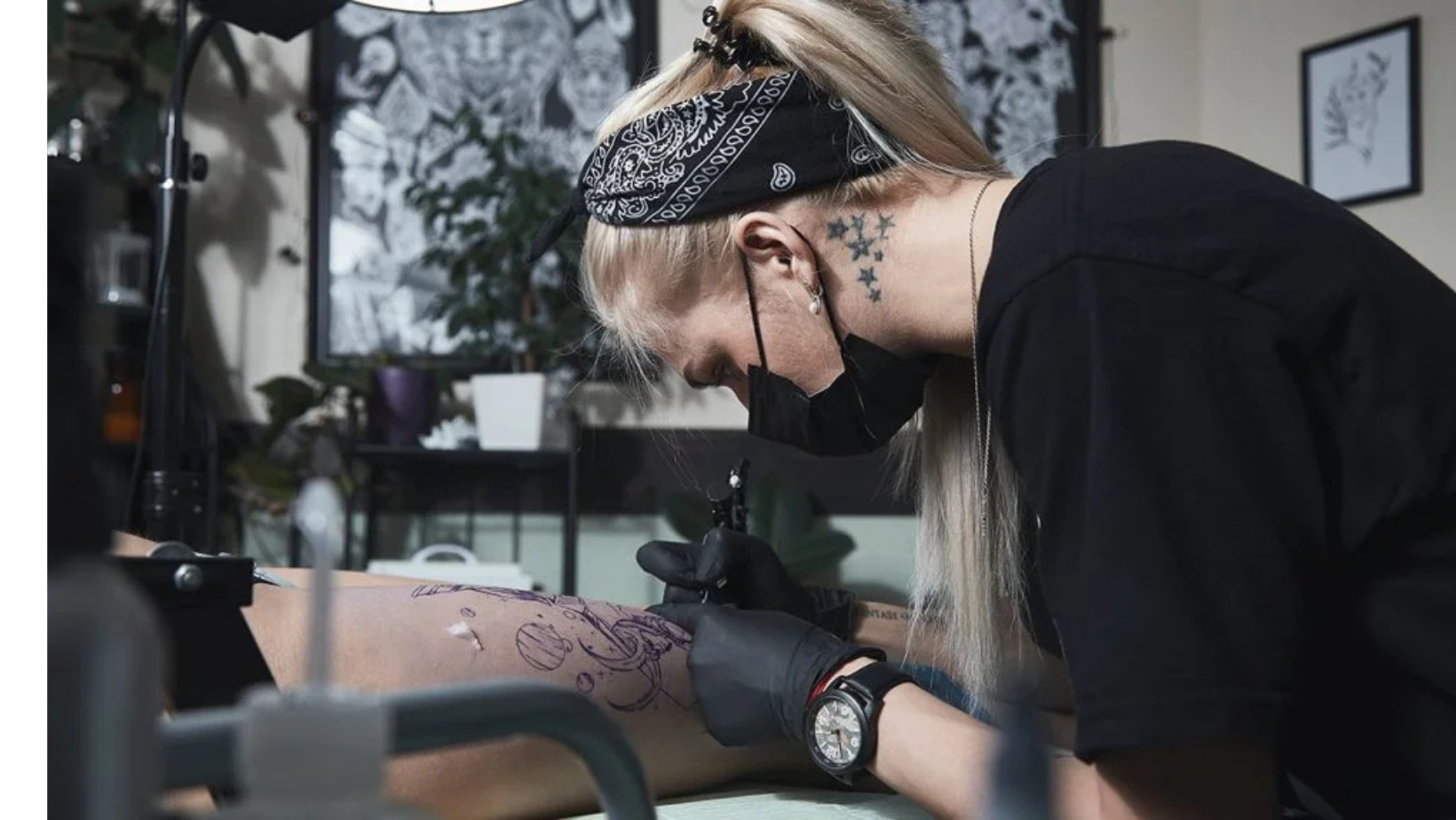bab
How Long a Tattoo Heals: Complete Guide to Tattoo Healing Time and Aftercare

Getting a tattoo is an exciting experience it’s a piece of art permanently etched into your skin, expressing personality, meaning, or style. But once you leave the tattoo studio, the most important part begins: healing.
Many people wonder how long a tattoo heals, what’s normal during recovery, and how to care for it to keep the colors vibrant. Understanding tattoo healing time can make the difference between a flawless design and one that fades or scars.
In this article, we’ll walk you through the complete tattoo healing process, from day one to full recovery, and give you expert aftercare tips to help your skin heal beautifully.
Understanding How Long a Tattoo Heals
So, how long for tattoo to heal completely?
In general, a tattoo takes 2 to 4 weeks to heal on the surface, but full recovery including the deeper layers of skin can take up to 3 months. The exact healing time depends on several factors:
-
The size and placement of the tattoo
-
The technique of the tattoo artist
-
Your skin type and immune system
-
How well you follow aftercare instructions
Smaller tattoos in less sensitive areas (like the arm or shoulder) usually heal faster than large, detailed designs on thin or high-friction areas (like ribs, ankles, or elbows).
The Tattoo Healing Stages Explained
Tattoo healing happens in several overlapping stages. Knowing what to expect during each phase can prevent panic and help you care for your skin properly.
1. The Fresh Wound (Days 1–3)
Right after getting your tattoo, your skin will feel sore, swollen, and warm much like a mild sunburn. The area may leak a mix of plasma, blood, and excess ink.
Your artist will cover it with a bandage or wrap, which you should keep on for the first few hours. Once removed, wash the tattoo gently with lukewarm water and a fragrance-free soap. Pat it dry and apply a thin layer of recommended healing ointment.
This stage is crucial because infection risk is highest. Avoid touching your tattoo with dirty hands, and don’t re-bandage it unless advised by your artist.
2. The Peeling and Itching Stage (Days 4–14)
Around day four, your tattoo will begin to scab and peel. This is part of the natural healing process as your skin regenerates. You may notice flaky pieces of colored skin don’t worry, that’s normal.
The key rule here: do not pick or scratch your tattoo. Peeling too early can pull out pigment and cause patchy spots.
Keep the area clean and moisturized with a light, non-greasy lotion. During this time, you might wonder again how long a tattoo heals patience is vital. Most tattoos are nearly healed on the surface after two weeks.
3. The Resting Phase (Weeks 3–4)
After the peeling stops, your tattoo will look slightly cloudy or dull. That’s because new skin layers are still forming over the ink.
Although it might seem healed, it’s not fully settled. Continue gentle moisturizing and avoid exposing it to the sun, pools, or tight clothing that may cause friction.
At this point, your tattoo healing time largely depends on your body’s ability to repair itself. Healthy habits like staying hydrated, eating well, and sleeping enough can accelerate the process.
4. Full Recovery (Up to 3 Months)
Below the surface, your skin continues to rebuild for several weeks. This deeper healing phase determines how your tattoo will look long-term.
If you take care of it properly using sunscreen, staying clean, and avoiding scratching your tattoo will settle evenly and retain its brightness.
By the 3-month mark, your tattoo should be fully healed, smooth, and vibrant. That’s the end of your tattoo healing time, but ongoing care keeps it looking fresh for years.
Factors That Affect Tattoo Healing Time
While the average recovery takes 2–4 weeks, every person heals differently. Here are common factors that can influence how long for tattoo to heal:
-
Tattoo size and detail: Large, shaded tattoos create more trauma to the skin, taking longer to recover.
-
Placement: Areas with thinner skin or constant movement (like wrists or ankles) heal slower.
-
Aftercare routine: Over-moisturizing, harsh soaps, or neglecting hygiene can delay healing.
-
Health and lifestyle: Smoking, dehydration, or poor nutrition can slow down skin regeneration.
-
Artist’s technique: A skilled tattooist who avoids over-working the skin will give you a cleaner, faster-healing result.
Essential Aftercare Tips for Faster Healing
To support your tattoo’s recovery and avoid infection, follow these professional aftercare tips:
-
Clean Gently: Wash twice daily with mild, fragrance-free soap.
-
Moisturize: Apply a thin layer of tattoo balm or lotion recommended by your artist.
-
Avoid Soaking: No swimming, long baths, or saunas for at least two weeks.
-
No Scratching or Picking: Let scabs fall off naturally.
-
Stay Out of the Sun: UV rays can fade new tattoos. Use sunscreen after it’s fully healed.
-
Wear Loose Clothing: Prevent rubbing that can irritate fresh skin.
-
Stay Healthy: Eat nutrient-rich foods and drink water to help your body repair tissue.
Consistent care will minimize scarring, preserve color vibrancy, and shorten your tattoo healing time.
When to See a Professional
If your tattoo shows signs of infection such as extreme redness, swelling, pus, or fever contact your artist or a healthcare provider immediately.
Early treatment prevents complications and ensures your tattoo heals properly.
Final Thoughts
So, how long a tattoo heals? On average, expect about 2–4 weeks for the surface to heal and up to 3 months for full skin recovery.
Every person’s tattoo healing time is unique, but with proper care, patience, and hygiene, your tattoo will remain a vibrant piece of art for years to come.
Whether it’s your first design or your tenth, understanding how long for tattoo to heal helps you plan ahead and protect your investment in body art. Remember: the healing process is as much a part of your tattoo journey as getting the ink itself.

